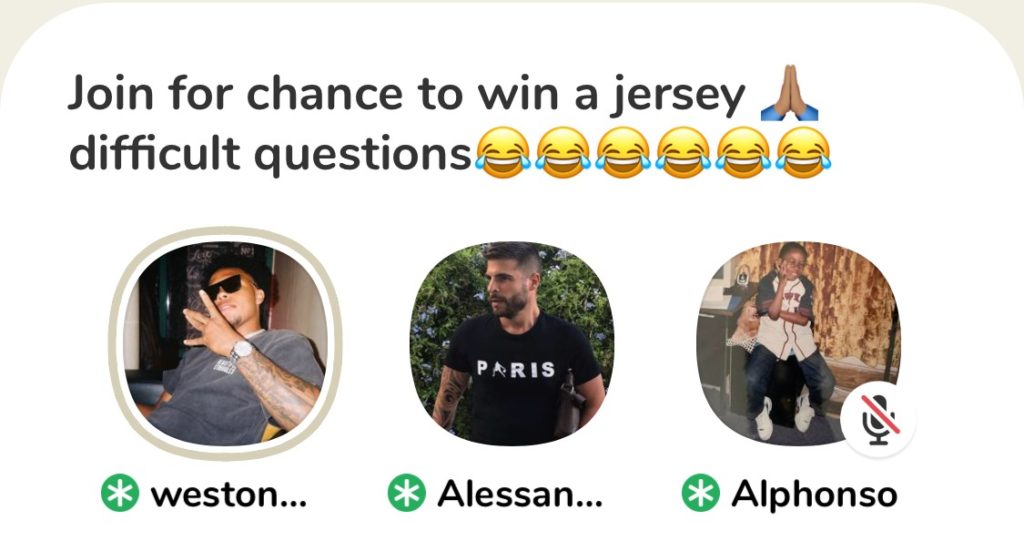Over the past few months there’s been increased attention given to Clubhouse. What is the platform? What value does Clubhouse have for brands and marketers? Should you be on it? We answer all those questions and more in our deep dive into Clubhouse.
What is Clubhouse?
Clubhouse is a social media app that features voice conversations. There are no posts containing images, videos, and the like you’d see on other social apps.
Instead, users join the platform to chat, with their voices, about a variety of topics. Different from Facebook, Twitter, TikTok, etc., Clubhouse is a living, breathing platform with no receipts. If you aren’t on the app to hear a conversation live and in the moment, you will not be able to retroactively hear that content.
There are two types of chatting options on the app. One option gives host(s) and moderator(s) control over the conversation. What does this mean? They get to decide who speaks, when they speak, and how the conversation flows – sort of like a conference, speaker series, or town hall. Through the app, listeners “raise their hand” if they want the opportunity to speak. These virtual chatrooms are one-off events and exist solely on a specific day and a specific time.
The second way to utilize the platform is via public and private clubs with topics and themes grouped into categories where people with similar interests congregate. Interested in fashion? Or finance? Or social issues? There are a myriad of Clubhouse rooms in which you can converse with likeminded people.
Where does Clubhouse fit in?
Since its launch in April 2020, Clubhouse has accumulated 6 million registered users with 2 million weekly active users. These numbers pale in comparison to other social media apps, but given its relative newness to market, not yet being available on Android, and invite-only status, expect the nascent app to continue growing and evolving.
| Platform | Timeframe | Active Users |
|---|---|---|
| Clubhouse | Weekly | 2+ million |
| Daily | 1.9 billion | |
| Daily | 500+ million | |
| Snapchat | Monthly | 249 million |
| TikTok | Monthly | 689 million |
| Monthly | 330 million | |
| YouTube | Monthly | 2 billion (logged-in users only) |
Where does Clubhouse fit among its contemporaries? By now you know it’s audio-only. There are no posts, no pictures, no 24-hour stories. It’s unlike Facebook, Instagram, Twitter, or Snapchat. For sake of simplification, let’s call Clubhouse an evolution of podcasts . If podcasts evolved from terrestrial and satellite radio as a form of on-the-go, delayed listening, then Clubhouse takes the podcast genre to a new live, interactive plateau.
As a form of rich media that can be consumed while doing other things, podcasts have risen in popularity. Why? You aren’t tied down to a video screen or a phone – instead, you press play while doing other things.
The next evolution of this is Clubhouse, through which you have live, vibrant conversations happening around the clock. This platform is better suited for instant reactions to things like sports, whereas podcasts must be recorded, edited, and uploaded. When news stories and sports results are at our fingertips, in-the-moment is better than down-the-line… provided the content is good.
Also, don’t discount the desire for social interaction in a time where there’s very little in-person engagement. Clubhouse is a new toy through which users can get their engagement fix and be a part of something meaningful.
What value does Clubhouse offer brands, teams, leagues?
One thought that may cross your mind is, “Great, another social media platform.” Whether that’s tinged with sarcasm or elation at the prospects of a new vertical, the bottom line is Clubhouse is inherently different from other social apps and deserves consideration. So, how do brands, marketers, teams, leagues, etc. find value in Clubhouse?
The reality is it’s a platform for discussion – an open forum, if you will. The prospects of this for all marketing stakeholders should be appealing because, unlike many other platforms where there’s some veil of secrecy, Clubhouse provides honest, open, and transparent consumer feedback. And the best part? The engagement is live, it can be a two-way conversation, and it takes a legitimate commitment from a consumer. It isn’t just a fleeting interaction.
Clubhouse provides a tremendous forum for depth of thought and opinion as opposed to chasing vanity engagements. Fostering actual conversation around what’s happening around the culture of soccer is a refreshing alternative to much of social media these days.
SCOTT HUTCHISON, GESM
Putting engagement rates aside and focusing strictly on consumer feedback, what’s more valuable – a 240-character reply on Twitter, a 60-second TikTok, or a 60-minute in-depth, multi-faceted conversation with a serious consumer? The answer may be situation dependent, but the opportunity for real-time feedback exists and that should pique the interest of many.
Take, for example, the Chicago Fire who announced plans for a second rebrand after their initial attempt was scorned. Could the Fire utilize Clubhouse to establish open communication lines with fans? Absolutely. Yes, there are other mediums and platforms, like Zoom, the Fire could utilize. While this may be true, Clubhouse provides a simple, easy, and non-video platform for an engaging conversation.
Additional thoughts on Clubhouse’s value
A core tenet of social publishing for GESM clients is the prioritization of community. To us, that means spending time conversing, listening, and providing accessibility to the audience. Clubhouse takes this to a whole new level by blending three awesome elements from different platforms into a unique offering:
1. Real-time / in-the-moment conversational aspect of Twitter
2. Moderation and self-regulation of Facebook Groups
3. Ability to sway between attentive and passive engagement of podcasts
Scott Hutchison, GESM
Clubhouse offers a similar value to teams, leagues, athletes, and brands that an app like Twitter does. It’s a direct connection to fans and consumers. The difference is Clubhouse is like a curated panel where topics and speakers can be tailored to what is relevant. It’s an added touch point to fans.
Dillon Payne, GESM
How can you utilize Clubhouse?
We’ve discussed the value, let’s move to practical uses. If TikTok, Instagram, or YouTube are video-heavy platforms showing fans the behind-the-scenes content they crave, what does Clubhouse provide? Like these platforms, it comes down to access, but the access manifests itself differently via Clubhouse.
Imagine this scenario: you’re one of the U.S. National Team’s biggest fans. You’ve attended x-number of games over the years and as a show of support, U.S. Soccer selects you to participate in an invite-only Clubhouse post-game conversation after the Men’s World Cup Qualifying game. You have the unique opportunity to ask Christian Pulisic about his goal and you get a brief bit of dialog you’d never get otherwise.
Or imagine a scenario where [insert brand here] is looking to create a campaign leading up to the 2026 FIFA World Cup. As a form of consumer research, they host a closed forum and get in-depth, instant feedback for different concepts or ideas. Can’t you do that on other social platforms? Yes, of course – but via Clubhouse the conversation can be more valuable because the engagement is more meaningful, less fleeting.
What about players? How can they use the platform? Clubhouse users saw one example recently when Weston McKennie and Alphonso Davies hosted a chat room. They asked various trivia questions about themselves and users with the correct answer were awarded with signed jerseys.

How else can brands, teams, and leagues utilize Clubhouse?
One sports application for Clubhouse is a team hosting a match recap chat where coaches and players talk about key moments. This gives fans a high-value “insider” experience. Clubhouse allows for listener participation where chosen fans ask a question specific to the topic or personnel speaking.
Dillon Payne, GESM
I expect to see teams utilize Clubhouse primarily for live Q&A sessions with players and team personnel. Access is the biggest advantage a team has over media outlets or similar competing properties. Clubhouse is the perfect tool to tap into this and engage fans on a more personal level. Teams with existing podcasts can conduct live podcast recordings and use the chatroom audience to field questions and discussion topics.
Griffin Ward, GESM
What does the future hold for Clubhouse?
Clubhouse is new. It’s exciting. There’s palpable buzz. However, because the platform is still in its infant stages, a number of kinks can be ironed out. Among the areas we would consider:
- Accessibility: lack of Android availability (currently being worked on) and a closed caption option for deaf users / better live comprehension
- Personalization: fine tuning the algorithm – suggested chats are all over the place
- Competitors: similar concepts being tested by Twitter and Facebook – is it easier for consumers to stay in a platform on which they’ve already cultivated a following?
- Moderating: not everyone is capable of or should be capable of moderating or filtering who is in a room, what questions are being asked, the direction in which a conversation goes, etc.
- Delayed Listening: recording / on-demand ability to re-listen to a chat you attended
The future of Clubhouse will be interesting to follow. There are plenty of opportunities for brands, teams, etc. to utilize the platform for consumer engagement and is worthy of consideration for your marketing mix.
Categories: Digital Content, Social Media
